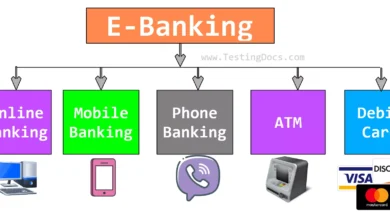
Drone detection optical systems, just like regular drone detection systems, are used to track unmanned aircraft systems (UAS) or drones. Demand for drone detection systems has been growing due to rising incidents of security breaches. Furthermore, drone detection optical systems find wide applications in the homeland security and commercial sector, such as airports, which will be lucrative for the overall industry in the coming years.
These systems alarm users when any drone enters a particular place. For commercial purposes, these systems are used in power plants, airports, prisons, transportation hubs, etc. In addition, the accelerating evolution in technology has raised the chances of disruptions even more. For instance, in 2019, Citadel Defense unveiled its efficient anti-drone Solution. After that, the firm also unveiled its new Titan brand CUAS product line in 2021. Citadel’s open software architecture enables the technology to interact quickly with third-party through command and control platforms. The Titan system can be automatically monitored from any nearby location when combined with a special Android Team Awareness Kit. The Titan Drone Finder also checks and informs the users about any UAS activity.
Growing incidences of unintentional airport disruptions and the use of drones for meticulous purposes, such as drug smuggling, have increased the necessity for efficient drone detection systems. Moreover, cross-border tensions are growing, and drone detection systems have found a vital place in the military sector. Drones are gaining substantial traction in the aviation industry.
How Drone Detection Optical Systems Can Combat Challenges
Done detection optical systems are expected to outperform conventional drone detector due to the efficiency and benefits it offers. Drone Detection optical system uses both visible and infrared capabilities to detect drones. These systems use visible and infrared cameras to detect the radiation characteristic of an object utilizing the infrared spectrum. The general aim of both visible and infrared cameras is to measure the intensity of the radiation before converting it into an electric signal to display the recognized body on the chosen user interface.
Tracking Launch Location:
Drone Detection Optical Systems can efficiently investigate the launch location of the drone, which best caters to the end-users demands. The system records the temperature of the vehicle’s monitor for doing so. The length of operating time is calculated to check the crucial information for determining the drone’s origin.
Constant Operations:
Drone detection operation systems provide services in all types of weather conditions, regardless of day and night. Moreover, these systems are resistant to harsh weather conditions, which ensures continuous operation at all times of the day and night, even in the face of rain or fog. Thus, it displays the heat signature of every drone that comes within range of the camera.
Accuracy:
There are various challenges associated with the use of drone detection systems, and the primary one is accuracy. Drone detection optical systems use visible light cameras, which are efficient in identifying the detected target. Drone detection systems can discriminate between the birds and drones, which is an advanced feature much looked for. Regular drone detection systems are usually unable to discriminate between the drones and birds due to their similarities in size. Moreover, the evolutions in optical technology continue to rocket, which has increased the precision rate of detection from 0.22 in 2013 to 0.8 in 2016. Moreover, the cameras installed in these systems can also zoom in to present high-resolution 3D images. The growing evolution is expected to open more doors for possibilities in the coming years.
Early Warning Feature:
The advancements in this industry are never-ending. Various companies offer drone detection optical systems with advanced early warning features. The use of AI video analytic software is projected to push innovations in the coming years by simplifying the functions. They can even be integrated with other efficient technologies, such as RF and radar systems, as offered by industry players.
Advancements:
Drones are rising in popularity but developing an efficient device to guard against unmanned aerial vehicles is much more difficult. Here are some of the innovations introduced by manufacturers of the Drone Detection Optical Systems:
Rinicom Limited, a global leader in AI-based EO UAV detection technologies, has developed various drone detection optical systems to cater to the demands of the end-users. For instance, the firm offers various systems, such as SkyPatriot Sector, an entry-level optical system embedded with a high-resolution detection camera; SkyPatriot Sector180/Sector360 systems, SkyPatriot Hunter, and SkyPatriot InSight, etc. Recently, the firm inked a partnership agreement with Dronengel. The aim of this partnership is to promote the firm’s SkyPatriot Optical C-UAV Solution in France.
Kelvin Hughes, in 2017, announced to launch of its drone detection system, embedded with optical capabilities. According to the Radar specialist, its MS-D was expected to be an integrated, medium-range, radar-based surveillance system mainly designed for the detection of small-sized aerial targets. The technology combines radar, optical and thermal imaging devices to track the devices.
Conclusion
The demand for active drone detection systems is increasing across the globe. Drone detection optical systems are forecast to have huge growth potential owing to the various benefits listed above. In addition, cross-border tensions across the globe and increasing military expenditure will significantly benefit the market. Furthermore, the rising need for homeland security, airport security, and other commercial places will upsurge the demand for these systems in the coming years. According to a study by Astute Analytica, the global drone detection optical systems market will grow at a compound annual growth rate (CAGR) of 30.3% during the forecast period from 2022 to 2027.
Read about How Online Travel Agencies are Outperforming Traditional Methods





